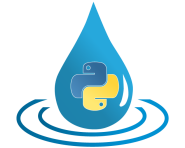Source code for hydpy.models.dummy_v1
# -*- coding: utf-8 -*-
# pylint: disable=unused-wildcard-import
"""
Version 1 of the dummy model serves as a temporary placeholder model.
In each simulation step, it simply sums up its inputs and hands the
resulting value to the downstream node without modifications.
Integration tests
=================
.. how_to_understand_integration_tests::
We prepare a simulation period of three days:
>>> from hydpy import pub
>>> pub.timegrids = "2000-01-01", "2000-01-04", "1d"
The model object does not require any parameter information:
>>> from hydpy.models.dummy_v1 import *
>>> parameterstep()
We add the model object to an element connected to two inlet nodes
and one outlet node and prepare a runnable test object:
>>> from hydpy import Element, IntegrationTest
>>> element = Element("element",
... inlets=("inlet1", "inlet2"),
... outlets="outlet")
>>> element.model = model
>>> test = IntegrationTest(element)
After defining two input series, we can demonstrate that each pair
of values of the inlet nodes is summed up and handed to the outlet node:
>>> element.inlets.inlet1.sequences.sim.series = 0.0, 1.0, 2.0
>>> element.inlets.inlet2.sequences.sim.series = 0.0, 2.0, -4.0
>>> test()
| date | q | inlet1 | inlet2 | outlet |
---------------------------------------------------------
| 2000-01-01 00:00:00 | 0.0 | 0.0 | 0.0 | 0.0 |
| 2000-01-02 00:00:00 | 3.0 | 1.0 | 2.0 | 3.0 |
| 2000-01-03 00:00:00 | -2.0 | 2.0 | -4.0 | -2.0 |
"""
# import...
# ...from HydPy
from hydpy.exe.modelimports import *
from hydpy.core import modeltools
# ...from dummy
from hydpy.models.dummy import dummy_model
[docs]
class Model(modeltools.AdHocModel):
"""The HydPy-Dummy model."""
INLET_METHODS = (dummy_model.Pick_Q_V1,)
RECEIVER_METHODS = ()
RUN_METHODS = ()
ADD_METHODS = ()
OUTLET_METHODS = (dummy_model.Pass_Q_V1,)
SENDER_METHODS = ()
SUBMODELS = ()
tester = Tester()
cythonizer = Cythonizer()
